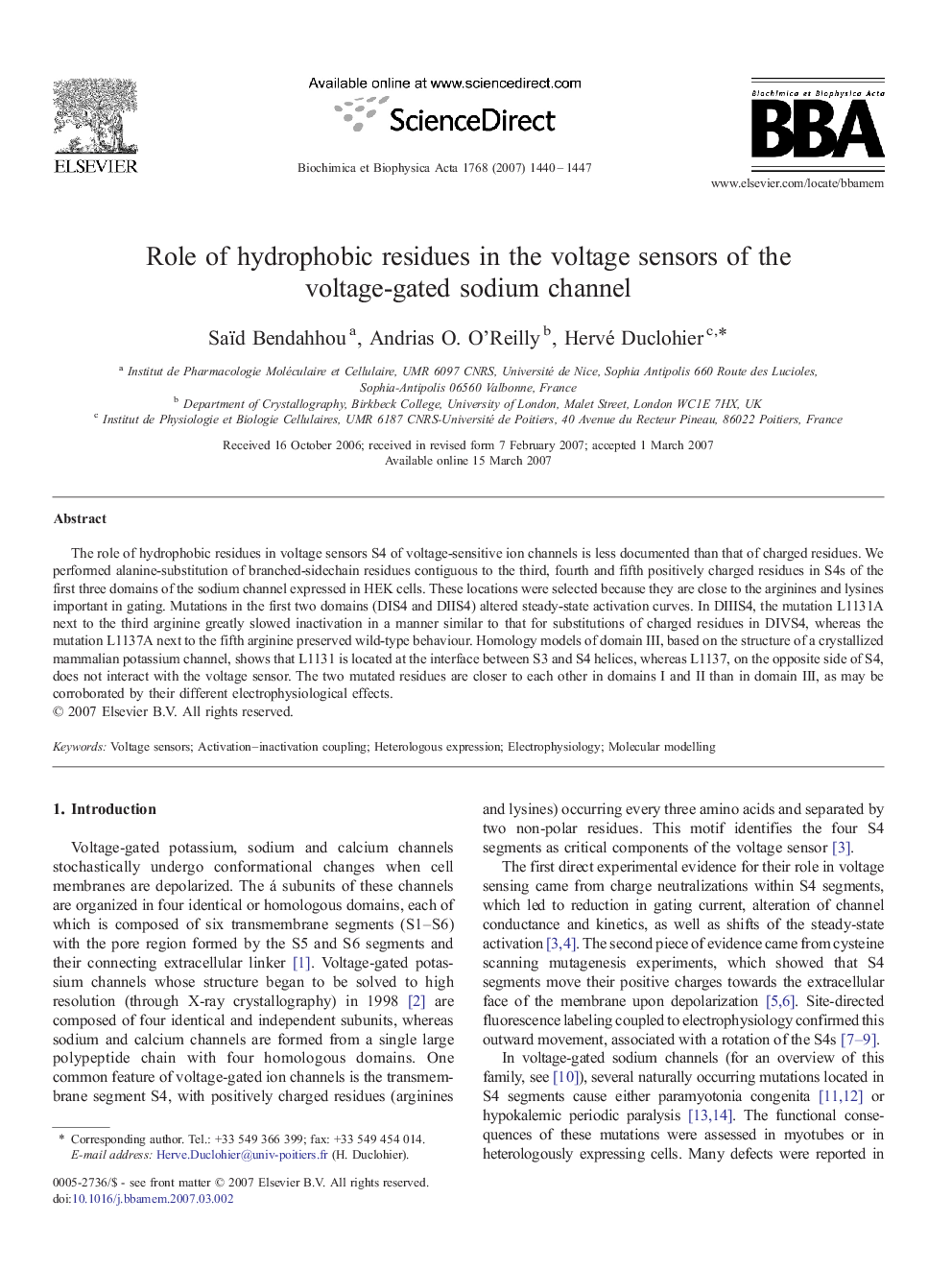| Article ID | Journal | Published Year | Pages | File Type |
|---|---|---|---|---|
| 1945890 | Biochimica et Biophysica Acta (BBA) - Biomembranes | 2007 | 8 Pages |
The role of hydrophobic residues in voltage sensors S4 of voltage-sensitive ion channels is less documented than that of charged residues. We performed alanine-substitution of branched-sidechain residues contiguous to the third, fourth and fifth positively charged residues in S4s of the first three domains of the sodium channel expressed in HEK cells. These locations were selected because they are close to the arginines and lysines important in gating. Mutations in the first two domains (DIS4 and DIIS4) altered steady-state activation curves. In DIIIS4, the mutation L1131A next to the third arginine greatly slowed inactivation in a manner similar to that for substitutions of charged residues in DIVS4, whereas the mutation L1137A next to the fifth arginine preserved wild-type behaviour. Homology models of domain III, based on the structure of a crystallized mammalian potassium channel, shows that L1131 is located at the interface between S3 and S4 helices, whereas L1137, on the opposite side of S4, does not interact with the voltage sensor. The two mutated residues are closer to each other in domains I and II than in domain III, as may be corroborated by their different electrophysiological effects.
